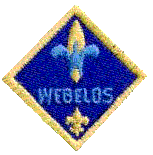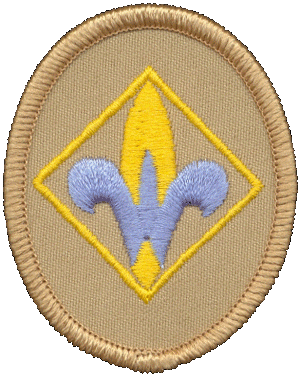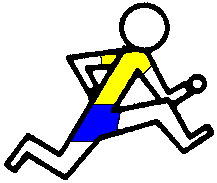Choose Item:
![]() Ranks
Ranks
![]() Tiger
Tiger
![]() Bobcat
Bobcat
![]() Wolf
Wolf
![]() Bear
Bear
![]() Webelos
Webelos
![]() Arrow of
Light
Arrow of
Light
![]() Activity
Pins
Activity
Pins
![]() Aquanaut
Aquanaut
![]() Artist
Artist
![]() Athlete
Athlete
![]() Citizen
Citizen
![]() Communicator
Communicator
![]() Craftsman
Craftsman
![]() Engineer
Engineer
![]() Family
Family
![]() Fitness
Fitness
![]() Forester
Forester
![]() Geologist
Geologist
![]() Handyman
Handyman
![]() Naturalist
Naturalist
![]() Outdoorsman
Outdoorsman
![]() Readyman
Readyman
![]() Scholar
Scholar
![]() Scientist
Scientist
![]() Showman
Showman
![]() Sportsman
Sportsman
![]() Traveler
Traveler
![]() Awards
Awards
![]() Webelos Super Achiever
Webelos Super Achiever
![]() Conservation Award
Conservation Award
![]() Compass Points
Compass Points
![]() Arrow of Light
Arrow of Light
![]() Sports
Sports
![]() Belt
Loops
Belt
Loops
![]() Letters
Letters
![]() Pins
Pins
![]() Academics
Academics
![]() Belt
Loops
Belt
Loops
![]() Letters
Letters
![]() Pins
Pins
|
|
| Note: Some pins are required for Webelos Badge and for the Arrow Of Light. The required pin for Webelos are: Fitness The required pins for Arrow of Light is: Citizen, Readyman The following is a list of the Activity Pin Requirements.
|
|
Book rack |
Napkin holder |
| Shelf | Animal cutouts |
| Bulletin board | Garden tool rack |
| Weather vane | Lid holder |
| Tie rack | Mailbox |
| Letter holder | Birdhouse |
| Notepad holder | Desk nameplate |
| Toolbox | Letter, Bill. and Pencil holder |
| Towel rack | Bread box |
| Recipe holder | Key rack |
| Lamp stand | Measuring cup rack |
| Kitchen knife rack | Measuring spoon rack |
| Kitchen utensil rack |
- Make a display stand, or box to be used to display a model or an award. Or make a frame for a photo or painting. Use suitable material.
- Make four useful items using materials other than wood that you and your Webelos den leader agree on, such as clay, plastic, leather, metal, paper, rubber, or rope. These should be challenging items and must involve several operations.
 ENGINEER
ACTIVITY
ENGINEER
ACTIVITY
(TECHNOLOGY GROUP)
Do Five of These:
- List 10 different things engineers do.
- Visit a construction job. Look at a set of plans. Tell your Webelos den leader about these. (Get permission before you visit.)
- Visit a civil engineer to understand how to measure the length of a property line. Explain how property lines are determined.
- Tell about how electricity is generated and then gets to your home.
- Construct a simple working electrical circuit using a flashlight battery, a switch, and a light.
- Make drawings of three kinds of bridges and explain their differences. Construct a model bridge of your choice.
- Make a block and tackle and show how it works.
- Build a catapult and show how it works.
- Draw a floor plan of your house. Include doors, windows, and stairways.
- Explain how engineers use computers.
 FAMILY
MEMBER ACTIVITY
FAMILY
MEMBER ACTIVITY
(COMMUNITY GROUP)
Do All of These:
- Tell what is meant by family, duty to family, and family meetings.
- Make a chart showing the jobs you and other family members have at home. Talk with your family about other jobs you can do for the next two months.
- Inspect your home and surroundings. Make a list of hazards or lack of security that you find. Correct one problem that you found and tell what you did.
- Explain why garbage and trash must be disposed of properly.
- Make a list of some things for which your family spends money. Tell how you can help your family save money.
- Plan your own budget for 30 days. Keep track of your daily expenses for seven days.
And Do Two of These:
- Prepare a family energy-saving plan. Tell the things you did to carry it out.
- Tell what your family does for fun. Make a list of fun things your family might do for little cost. Do one of them with a member of your family.
- Learn how to clean your home properly. Help do it for one month.
- Show that you know how to look after your clothes. Help with at least two family washes.
- Help plan the meals for your family for at least 1 week. With adult supervision, help buy the food and help prepare at least three meals for your family.
- Take part in at least four family meetings and help make decisions. The meetings might involve plans for family activities, or they might be about serious topics that your parent wants you to know about.
 FITNESS
ACTIVITY
FITNESS
ACTIVITY
(PHYSICAL SKILLS GROUP)
Required for Webelos Badge
Do Six of These:
- With a parent or other adult family member complete a safety notebook, which is discussed in the pamphlet "How to Protect Your Children from Child Abuse " found in the front of this book.
- Read the meal planning information in this chapter. With a parent or other family member, plan a week of meals. Explain what kinds of meals are best for you and why.
- Keep a record of your daily meals and snacks for a week. Decide whether you have been eating foods that are good for you.
- Tell an adult member of your family about the bad effects smoking or chewing tobacco would have on your body.
- Tell an adult member of your family four reasons why you should not use alcohol and how it could affect you.
- Tell an adult member of your family what drugs could do to your body and how they would affect your ability to think clearly.
- Read the booklet Take A Stand Against Drugs! Discuss it with an adult and show that you understand the material.
 FORESTER
ACTIVITY
FORESTER
ACTIVITY
(OUTDOOR GROUP)
Do Five of These:
- Make a map of the United States. Show the types of forests growing in different parts of the country. Name some kinds of trees that grow in these forests. For each type of forest, give one or more examples of uses for the wood of its trees.
- Draw a picture to show the plant and tree layers of a forest in your area. Label the different layers. (If you don't live in an area that has forests, choose an area that does and draw a picture of that forest.)
- Identify six forest trees common to the area where you live. Tell how both wildlife and humans use them. (If you don't live in a region that has forests, read about one type of forest and name six of its trees and their uses.)
- Identify six forest plants (other than trees) that are useful to wildlife. Tell which animals use them and for what purposes.
- Draw a picture showing
- how water and minerals in the soil help a tree grow
- how the tree uses sunlight to help it grow
- Make a poster showing how a tree's growth rings tell its life history
- Collect pieces of three kinds of wood used for building houses.
- Plant 20 forest tree seedlings.Tell how you planted them and what you did to take care of them after planting.
- Describe the harm wildfires can cause. Tell how you can prevent wildfire.
- Draw your own urban forestry plan for adding trees to a street, yard, or park near your home. Show what types of trees you would like to see planted.
 GEOLOGIST
ACTIVITY
GEOLOGIST
ACTIVITY
(OUTDOOR GROUP)
Do Five of These
- Collect five geologic specimens that have important uses.
- Rocks and minerals are used in metals, glass, jewelry, road-building products, and fertilizer. Give examples of minerals used in these products.
- Make a scale of mineral hardness for objects found at home. Show how to use the scale by finding the relative hardness of three samples.
- List some of the geologic materials used in building your home.
- Make a drawing that shows the cause of a volcano, a geyser, or an earthquake.
- Explain one way in which mountains are formed.
- Describe what a fossil is. How is it used to tell how old a formation is? Find two examples of fossils in your area.
 HANDYMAN
ACTIVITY
HANDYMAN
ACTIVITY
(TECHNOLOGY GROUP)
Do Six of These:
- With adult supervision, wash a car.
- Help an adult change a tire on a car.
- With adult supervision, replace a bulb in the taillight, turn signal, or parking light or replace a headlight on a car.
- With adult supervision, show how to check the oil level and tire pressure on a car.
- Make a repair to a bicycle, such as tightening the chain, fixing a flat tire, or adjusting the seat or handlebars.
- Properly lubricate the chain and crank on a bicycle.
- Properly inflate the tires on a bicycle.
- Replace a light bulb in a fixture or lamp.
- With adult supervision, arrange a storage area for household cleaners and other dangerous materials where small children cannot get them.
- Build a sawhorse or stool to be used around your home.
- Help take care of the lawn.
- Arrange a storage area for hand tools or lawn and garden tools.
- Clean and properly store hand tools or lawn and garden tools in their storage area.
- Mark hand tools or lawn and garden tools for identification.
 NATURALIST
ACTIVITY
NATURALIST
ACTIVITY
(OUTDOOR GROUP)
Do Four of These
- Keep an "insect zoo" that you have collected. You might have crickets, ants, or grasshoppers. Study them for a while then release them.
- Set up an aquarium or terrarium. Keep it for at least a month.
- Visit a museum of natural history, nature center, or zoo with your family, den, or pack. Tell what you saw.
- Watch for birds in your yard, neighborhood, or town for one week. Identify the birds you see and write down where and when you saw them.
- Learn about the bird flyways closest to your home. Find out which birds use these flyways.
- Learn to identify poisonous plants and venomous reptiles found in your area.
- Watch six wild animals (snakes, turtles, fish, birds, or mammals) in the wild. Describe the kind of place (forest, field, marsh, yard, or park) where you saw them. Tell what they were doing.
- Give examples of
- A producer, a consumer, and a decomposer in the food chain of an ecosystem
- One way humans have changed the balance of nature
- How you can help protect the balance of nature
 OUTDOORSMAN
ACTIVITY
OUTDOORSMAN
ACTIVITY
(OUTDOOR GROUP)
Do Five of these:
- Show your ability to tie the following knots:
- Square knot,
- Bowline,
- Clove hitch,
- Two half hitches,
- Taut-line hitch
- Pitch a tent using two half hitches and a tautline hitch.
- With your adult partner, take part in a Webelos overnighter or camp overnight with a Boy Scout troop.
- Help with a two-night campout away from home with your family. Or go on two one-night campouts with your family.
- With your family or Webelos den, plan and take part in an evening outdoor activity that includes a campfire.
- Help cook your own lunch or supper outdoors with a parent or another adult. Clean up afterward.
- Know and practice the rules of outdoor fire safety.
- Visit a nearby Boy Scout camp with your den.
 READYMAN ACTIVITY
READYMAN ACTIVITY
(COMMUNITY GROUP)
Required for Arrow of Light
Do All of These:
- Explain what first aid is. Tell what you should do after an accident.
- Explain how you can get help quickly if there is an emergency in your home. Make a "help list" of people or agencies that can help you if you need it. Post it near a phone or other place with easy access.
- Show what to do for these "hurry cases":
- Serious bleeding
- Stopped breathing
- Internal poisoning
- Heart attack
- Show how to treat shock.
- Show first aid for the following:
- Cuts and scratches
- Burns and scalds
- Choking
- Tell what steps must be taken for a safe swim with your Webelos den, pack, family, or other group. Explain the reasons for the buddy system.
And Do Two of These:
- Explain six rules of safety you should follow when driving a bicycle.
- Plan a home fire escape plan for your family.
- Explain how to use each item in a first aid kit for a home or car.
- Tell where accidents are most likely to happen inside and around your home.
- Explain six safety rules you should remember when riding in a car.
- Attend a first aid demonstration at a Boy Scout troop meeting, a Red Cross center, or other place.
 SCHOLAR
ACTIVITY
SCHOLAR
ACTIVITY
(MENTAL SKILLS GROUP)
Do Three of These:
- Have a good record in attendance, behavior, and grades at school.
- Take an active part in a school activity or service.
- Discuss with your teacher or principal the value of having an education.
- List in writing some important things you can do now because of what you've learned in school.
And Do Three of These:
- Trace through history the different kinds of schools. Tell how our present public school system grew out of these early schools.
- Make a chart showing how your school system is run.
- Ask a parent and five other grown-ups these questions:
- What do you think are the best things about my school?
- What are its main problems?
What do you think were the best answers? Why?
- List and explain some of the full-time positions in the education field.
- Help another student with schoolwork. Tell what you did to help.
![]() Learn
about Cub Scout Academic Programs
Learn
about Cub Scout Academic Programs
 SCIENTIST
ACTIVITY
SCIENTIST
ACTIVITY
(TECHNOLOGY GROUP)
Do These:
- Read Bernoulli's Principle. Show how it works.
- Read Pascal's Law. Tell about some inventions that use Pascal's law.
- Read Newton's first law of motion. Show in three different ways how inertia works.
And Do Six of These:
- Show the effects of atmospheric pressure.
- Show the effects of air pressure.
- Show the effects of water pressure. This may be combined with atmospheric pressure or with air pressure.
- Build and launch a model rocket with adult supervision. (NOTE: You must be at least 10 years old to work with a model rocket kit sold in hobby stores.)
- Explain what causes fog. Show how this works.
- Explain how crystals are formed. Make some.
- Explain how you use your center of gravity to keep your balance. Show three different balancing tricks.
- Show in three different ways how your eyes work together.
- Show what is meant by an optical illusion.
 SHOWMAN
ACTIVITY
SHOWMAN
ACTIVITY
(MENTAL SKILLS GROUP)
Choose one set of requirements for this badge:
Puppetry, Music, OR
Drama
PUPPETRY REQUIREMENTS
Do Four of These:
- Write a puppet play about one of your Webelos den activities or a subject of your choice.
- Make a set of puppets or marionettes for the play you have written or for another play.
- Build a simple stage for puppets or marionettes.
- Alone or with the help of others, put on a puppet show for your den or pack.
- Make a set of four paper bag puppets for a singing group. With the help of three other den members, sing a song with the puppets as the performers.
- There are sock, stick and finger puppets. There are paper bag puppets and marionettes. Explain their differences and show any puppets you have made for this badge.
MUSIC REQUIREMENTS
Do Four of These:
- Play four tunes on any band or orchestra instrument. Read these from music.
- Sing two songs alone or with a group.
- Make a collection of three or more records, tapes, or compact discs. Tell what you like about each one.
- Tell what folk music is. Hum, sing, or play a folk tune on a musical instrument.
- Name three American composers. Name a famous work by each.
- Draw a staff. Draw on it a clef, sharp, flat, natural, note, and rest. Tell what each is used for.
- Show the difference between 2/4, 3/4, and 4/4 time by beating time or playing an instrument.
DRAMA REQUIREMENTS
Do Four of These:
- Give a monologue (a talk) on a patriotic, humorous, or holiday subject, or another subject of your choice.
- Attend a play. Describe the story. Tell what you liked about it.
- Read a play. Make a model stage setting for one of the acts.
- Write, put on, and take part in a one-act play.
- Make a list of stage directions. Tell what they mean.
- Describe a theater-in-the-round. What are its good and bad points?
- Explain the difference between a grand opera and a light opera. Explain the difference between a musical and a play.
- Read about William Shakespeare. Draw a picture of his Globe Theater.
 SPORTSMAN
ACTIVITY
SPORTSMAN
ACTIVITY
(PHYSICAL SKILLS GROUP)
DO THESE:
- Show the signals used by officials in one of these sports: football, basketball, baseball, soccer, or hockey.
- Explain what good sportsmanship means.
- While you are a Webelos Scout, earn Cub Scout Sports belt loops for two individual sports (archery, badminton, bicycling, bowling, fishing, golf, gymnastics, marbles, physical fitness, skating, skiing, swimming, table tennis, or tennis).
- While you are a Webelos Scout, earn Cub Scout Sports belt loops for two team sports (baseball, basketball, soccer, softball, volleyball, or ultimate).
![]() Learn about
the Cub Scout Sports Program
Learn about
the Cub Scout Sports Program
 TRAVELER
ACTIVITY
TRAVELER
ACTIVITY
(MENTAL SKILLS GROUP)
Do Five of These:
- Get a map or timetable from a railroad, bus line, airline, subway, or light rail. The line should serve the place where you live or where you live. Look up some places it goes.
- Use a timetable to plan a trip from your home to a city in another state by railroad, bus, airline, or ferry.
- With your parent or guardian, take a trip to a place that interests you. Go by car, bus, boat, train, or plane.
- Figure out what it costs per mile for the trip you have taken in requirement 3.
- List four nearby trips you would like to take with your parents or guardian. Lay out the trips on a highway map. Using the map, act as navigator on one of these trips. It should start at your home, be at least 25 miles long, and have six or more turns.
- Pack a suitcase for a trip.
- Check the first aid kit in the family car to see if it contains what it needs
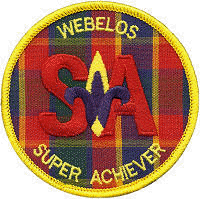 |
Earn them all? You're a Webelos Super Achiever! |
The
ScoutingBSA.org web site is a
legacy site of the Viking Council BSA, now Northern Star Council.
![]() Return
to the Main Cub Scout Awards Page
Return
to the Main Cub Scout Awards Page
This site was the original council site and was active from 1996 to
2002 and run by volunteers. As the web became more important to
Scouting, the council took over with paid staff. This site is no
longer maintained but is an interesting snapshot of an early Scouting
web site. You can share your comments
using our
on-line form or
send a message to the
Webmaster. Thank you
for visiting!
|
||||||
Last Update May 15, 2023
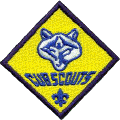
.jpg)

